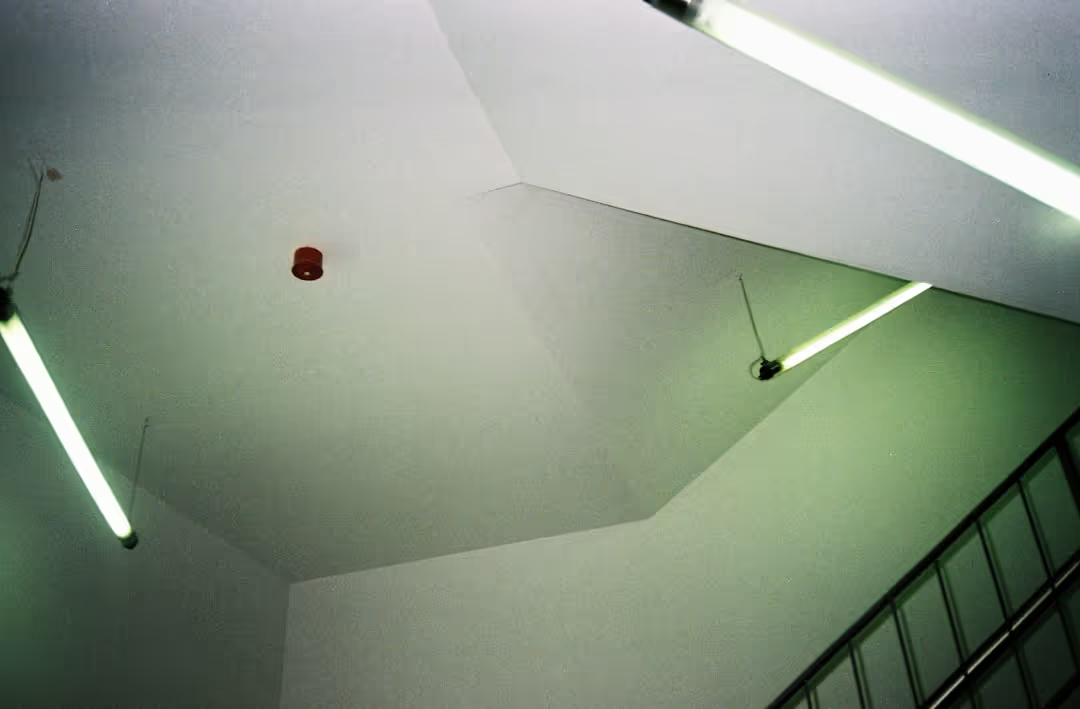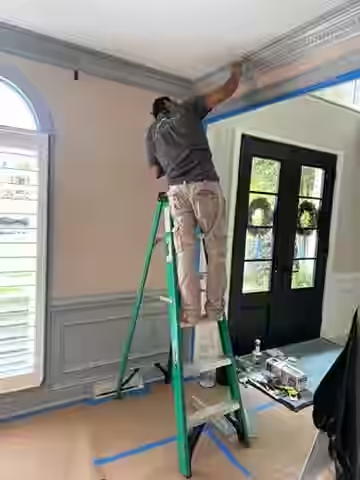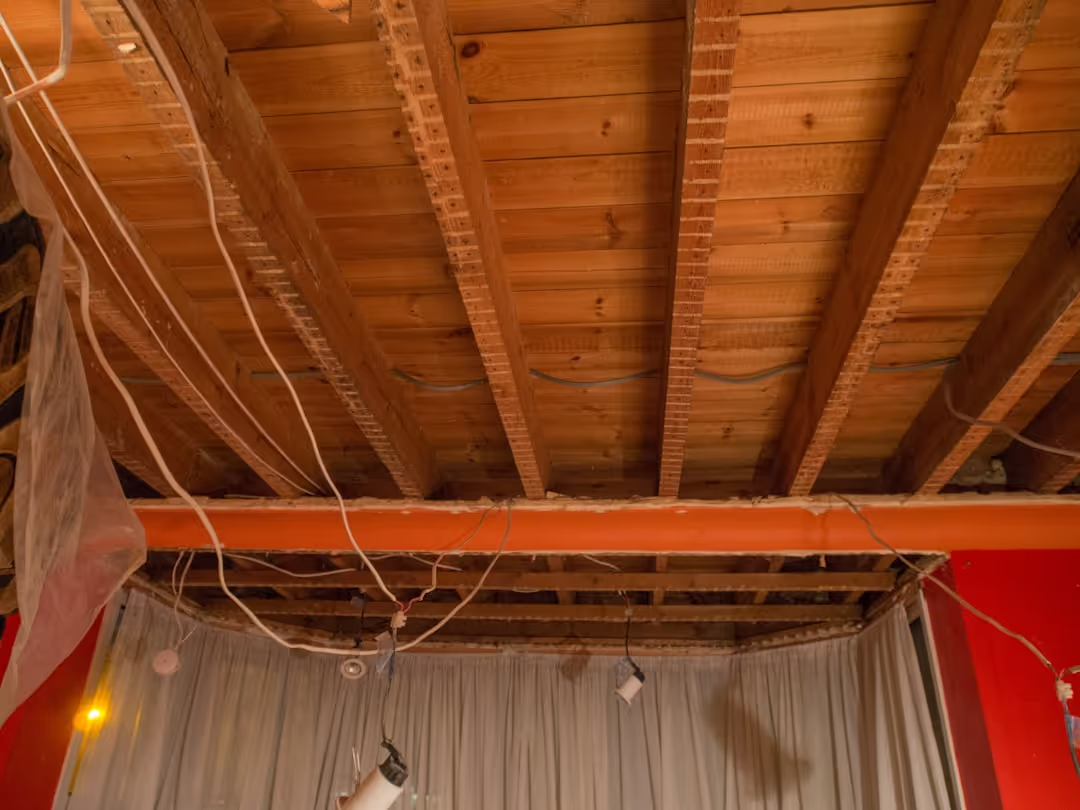Your Guide to Safe Asbestos Popcorn Ceiling Removal

Why Asbestos Popcorn Ceiling Removal Requires Extreme Caution
Asbestos popcorn ceiling removal is one of the most dangerous home improvement projects you can attempt. If your home was built before 1990, there's a significant chance your textured ceiling contains asbestos fibers that can cause serious health problems when disturbed.
Quick Answer for Safe Removal:
- Test first - Never assume your ceiling is safe without professional testing
- Hire certified professionals - DIY removal puts your family in serious risk
- Expect $3-7 per square foot for professional asbestos removal
- Consider alternatives - Encapsulation or covering may be safer options
- Get proper permits - Legal requirements vary by location
Popcorn ceilings were incredibly popular from the 1950s through the 1980s. Builders loved them because they hid imperfections, reduced noise, and were cheap to apply. But here's the problem: asbestos was commonly mixed into the texture during those decades as a fire retardant and binding agent.
The health risks are severe. When asbestos fibers become airborne during removal, they can stay in the air for 48 to 72 hours. Even small amounts of exposure can lead to lung cancer, mesothelioma, and asbestosis decades later.
Many Charlotte homeowners find this reality when they start scraping what they thought was a simple DIY project. One homeowner shared: "We started scraping our bedroom ceiling before testing it. When the results came back positive for asbestos, we realized we'd put our whole family at risk."
The good news? Professional removal is possible, and the results are worth it. A smooth, modern ceiling completely transforms a room's appearance and eliminates the health hazard.

Identifying Asbestos in Your Ceiling and Understanding the Risks
Understanding asbestos is the first step in safe asbestos popcorn ceiling removal. This mineral was a popular building material from the 1950s to the late 1980s, and sometimes into 1990. Builders valued its fire-resistant properties and its ability to act as a binding agent. Popcorn ceilings, also known as acoustic ceilings, often contained asbestos to help hide imperfections and provide minor noise dampening. If your home was built before 1990, there is a significant chance your textured ceiling contains this hidden hazard.
The danger arises when these materials are disturbed, releasing microscopic asbestos fibers into the air. These fibers are invisible to the naked eye and can remain airborne for up to 48 to 72 hours. Once inhaled, they can lodge in the lungs and lead to severe health issues decades later, including asbestosis (a chronic lung disease), mesothelioma (a rare and aggressive cancer), and various forms of lung cancer. There is no safe level of asbestos exposure. For more information, the Centers for Disease Control and Prevention offers detailed resources on Asbestos Exposure and Reducing Exposure.
How to Test for Asbestos
You cannot tell if a popcorn ceiling contains asbestos by looking at it. The only way to know for sure is through professional laboratory testing. While hiring a certified asbestos professional to take samples is the safest method, you can collect a sample yourself with a home-based testing kit if you follow strict safety precautions.
Here's how to safely collect a sample for testing:
- Prepare the Area: Clear the space below the sample site and lay down a plastic sheet to catch debris. Wear personal protective equipment (PPE), including gloves, safety glasses, and a disposable dust mask.
- Wet the Ceiling: Use a spray bottle with water and a few drops of dish soap to thoroughly saturate a small (1-2 square inch) section of the ceiling. This is crucial to prevent fibers from becoming airborne. Let it soak for 15-20 minutes.
- Scrape the Sample: Using a putty knife, gently scrape a small amount (about the size of a quarter) of the dampened texture.
- Collect and Seal: Place the sample directly into a clean, sealable plastic bag. Double-bag it for extra safety and label it with the date and location of the sample.
- Clean Up: Use a damp cloth to clean your tools and the surrounding area. Dispose of the cloth and plastic sheeting in another sealed bag.
- Send to a Lab: Mail your sealed sample to an accredited lab for analysis. Testing is typically affordable, around $25 per sample. If the result is negative (1% or less asbestos), it's wise to test two more samples from different areas for peace of mind.
The Dangers of Disturbing Asbestos
Asbestos only becomes a health hazard when its fibers are released into the air. If your asbestos-containing ceiling is in good condition and left undisturbed, it is generally not releasing fibers, and the safest option may be to leave it alone.
The material becomes dangerous when it is "friable," meaning it can be easily crumbled by hand pressure, releasing fibers. Any activity that disturbs the ceiling can make it friable.
Common disturbance scenarios include:
- Scraping: The most common removal method, which aggressively dislodges fibers if not done with proper wetting and containment.
- Sanding: Never sand an asbestos-containing surface, as this is a guaranteed way to release massive amounts of fibers.
- Drilling/Nailing: Even small projects like installing a light fixture can release fibers.
- Water Damage: A leak can cause the ceiling material to break down and become friable, releasing fibers into your home.
Once disturbed, asbestos fibers can remain airborne for 48 to 72 hours, and can be repeatedly stirred up by normal household activity. This is why professional help is strongly recommended for any asbestos popcorn ceiling removal project.
Safe Asbestos Popcorn Ceiling Removal: Professional vs. DIY
Once you confirm your popcorn ceiling contains asbestos, you must decide between professional removal and a high-risk DIY approach. While the DIY route may seem cheaper, asbestos popcorn ceiling removal is extremely dangerous, and we strongly recommend hiring certified professionals. The health risks are too severe to gamble with.
| Feature | DIY Asbestos Removal (High-Risk) | Professional Asbestos Removal |
|---|---|---|
| Cost | $3-7 per sq. ft. (materials + disposal) | $3-7 per sq. ft. |
| Safety | Extremely dangerous - high exposure risk | Very high - trained teams with proper equipment |
| Time | Days to weeks (learning curve) | 1-2 days average |
| Legality | Highly regulated, varies by location | Fully compliant with all regulations |
| Equipment | Expensive specialized PPE, containment materials | Professional-grade equipment included |
The cost difference between DIY and professional removal is often minimal once you buy the required specialized equipment and pay for proper disposal. Furthermore, while homeowners in some areas can legally remove asbestos from their own single-family homes, you are prohibited from hiring anyone but certified contractors to help.
The Professional Removal Process
Professional asbestos popcorn ceiling removal is a meticulous process designed for maximum safety. Certified teams follow strict protocols to protect your family and home.
The key steps include:
- Containment: The work area is completely sealed off with heavy-duty plastic sheeting. All vents, doors, and windows are taped shut to create an isolated work zone.
- Negative Air Pressure: Specialized machines with HEPA filters are used to ensure air flows into the work area but not out, capturing any stray fibers.
- Personal Protective Equipment (PPE): The team wears full-body disposable coveralls, non-fogging goggles, and properly fit-tested HEPA-filtered respirators.
- Wetting Methods: The ceiling is continuously sprayed with amended water (water with a wetting agent) to weigh down asbestos fibers and prevent them from becoming airborne.
- Scraping and Cleanup: Technicians use specialized tools to carefully scrape the wet texture. All waste is collected using HEPA vacuums.
- Disposal: All asbestos-containing waste is double-bagged in labeled disposal bags and transported to a licensed hazardous waste facility according to strict EPA disposal regulations.
High-Risk DIY Asbestos Popcorn Ceiling Removal Steps
We cannot recommend DIY asbestos popcorn ceiling removal. The health and legal risks are significant, and the margin for error is zero. While it may be legal for you to perform in your owner-occupied home, you are accepting full liability for any contamination or health issues.
A DIY attempt requires professional-grade PPE (a HEPA-filtered respirator, not a simple dust mask), full room containment with 6-mil plastic sheeting, constant wetting of the material, and a complex decontamination process for yourself and your tools. The biggest challenge is disposal. Asbestos is hazardous waste and cannot go in your regular trash. You must follow strict local and federal laws for bagging, transport, and disposal at a licensed facility, which often involves permits and can result in hefty fines if done incorrectly.
Cost of Asbestos Popcorn Ceiling Removal
Professional asbestos popcorn ceiling removal typically costs $3-7 per square foot, but can range up to $15 per square foot in some areas. Factors influencing the price include room size, ceiling height, whether the ceiling is painted (which makes wetting more difficult), and local disposal fees.
DIY costs can quickly approach professional prices once you purchase a quality HEPA respirator ($200+), coveralls, plastic sheeting, and pay for proper disposal. The hidden cost of a mistake, such as contaminating your home's HVAC system, can lead to thousands of dollars in professional remediation fees. In comparison, standard non-asbestos popcorn ceiling removal averages $1-2 per square foot, with projects costing between $905-2,907 according to typical removal cost data. The premium for asbestos work reflects the necessary safety measures and legal compliance.
Alternatives to Removal and Post-Removal Finishing
The process of asbestos popcorn ceiling removal can feel daunting. The good news is that removal isn't your only option. If your asbestos-containing ceiling is in good condition and undisturbed, alternatives can provide a fresh look without the risks of abatement.
One popular alternative is encapsulation, which means sealing the asbestos fibers in place with a special sealant or a thick coat of paint. This locks down the fibers, preventing them from becoming airborne.
- Pros of Encapsulation: It is generally cheaper, faster, and less disruptive than removal. It's a safer process because the asbestos is not disturbed.
- Cons of Encapsulation: This is not a permanent solution, as the asbestos is still present. If the ceiling is damaged later, fibers could be released. It also makes future removal much more difficult.
Another excellent option is covering the ceiling by installing a new layer over the existing popcorn texture. This can be done with new drywall sheets or by applying a skim coat of plaster to create a smooth surface.
- Pros of Covering: This method provides a truly smooth, modern ceiling and effectively seals the asbestos away. It completely transforms the room.
- Cons of Covering: It adds weight to the ceiling structure and slightly lowers the ceiling height. The asbestos remains underneath, so future renovations would still require caution.
Creating a Modern, Smooth Ceiling
After the asbestos popcorn ceiling removal is complete and certified safe—or if you've chosen to cover it—the exciting change begins. This is where GW Painting Co. steps in to create a flawless, modern surface.
Achieving a perfectly smooth ceiling involves several key steps:
- Ceiling Repair: Our professionals carefully patch any gouges, tears, or nail pops in the drywall to create a solid foundation.
- Skim Coating: We apply one or more thin layers of joint compound across the entire ceiling, skillfully creating a uniform, smooth base.
- Sanding: Once dry, the ceiling is lightly sanded to remove any minor imperfections, ensuring the surface is perfectly smooth for priming.
- Priming: We apply a high-quality primer to seal the new surface, which ensures even paint absorption and a durable, long-lasting finish.
- Painting: Finally, we apply a fresh coat of paint. A flat finish is popular for ceilings as it hides imperfections, but we can help you choose the perfect paint to achieve your desired look.
At GW Painting Co., our expertise in interior painting ensures your new ceiling is not only safe but also beautiful. To learn more, check out our Interior Residential Painting services and explore our Speciality Painting options.
Frequently Asked Questions about Asbestos Popcorn Ceilings
Here are answers to the most common questions we receive about asbestos popcorn ceiling removal. For more general home improvement questions, please visit our main FAQs page.
How can I tell what year my popcorn ceiling was installed?
The age of your home is the best clue. If your house was built between the 1950s and the late 1980s, there is a high probability your popcorn ceiling contains asbestos, which was typically 1% to 10% of the material. The use of asbestos continued in some products until 1990.
Check your home's original construction date in your real estate records or with your local county assessor. If you have them, previous owner disclosures might also mention asbestos. The safest rule: if your home was built before 1990, assume your popcorn ceiling contains asbestos until you have it professionally tested.
Is it illegal for me to remove my own asbestos popcorn ceiling?
The legality of DIY asbestos popcorn ceiling removal varies by state and local regulations. In many areas, including parts of North Carolina, homeowners are legally permitted to remove asbestos from their own owner-occupied, single-family residence.
However, there are critical restrictions:
- It is almost always illegal to hire anyone who is not a state-certified asbestos abatement contractor.
- You may be required to notify your local air quality agency before starting.
- Improper disposal of asbestos waste is a serious offense with hefty fines. You must follow specific regulations for bagging, labeling, and transporting the waste to a licensed hazardous waste facility.
Given the health risks and legal liabilities, consulting with a certified professional is always the smartest and safest path.
Can I just paint over an asbestos popcorn ceiling?
Yes, in many cases, you can. Painting over an asbestos popcorn ceiling is a process called encapsulation. If your ceiling is in good condition, a coat of paint can act as a sealant, locking in the asbestos fibers and preventing them from becoming airborne. This is often a safer and more cost-effective alternative to removal.
However, encapsulation is not a permanent solution. The asbestos is still present, and if the paint is ever chipped, cracked, or damaged, fibers could be released. It is vital to maintain the painted surface and address any damage immediately.
A significant drawback is that painting makes future removal much more difficult. The paint creates a barrier that prevents water from soaking into the texture, which is a critical step for safe, dust-free scraping. This can make a future removal project more complex and expensive, whether for a professional or a DIYer.
Your Partner for a Safe and Beautiful Home
Wow, we've certainly covered a lot of ground today about asbestos popcorn ceiling removal! It's a topic that brings up many questions and concerns for homeowners, and we truly hope this guide has brought you clarity. The most important message we want to leave you with is this: your safety, and the well-being of your family, must always come first.
Asbestos is a serious health hazard, and while it might be tempting to tackle a project like this yourself, we can't stress enough the importance of approaching it with extreme caution. That's why we always recommend seeking guidance or professional services from certified experts in asbestos abatement. These professionals have the specialized training, equipment, and strict protocols needed to handle hazardous materials safely, minimizing exposure risks and ensuring compliance with all legal regulations. It’s an investment in your peace of mind and your family’s health.
Once the asbestos has been safely and legally removed, that's where the fun begins, and where GW Painting Co. truly shines! We're passionate about changing homes here in Charlotte, NC, and the surrounding areas – from Concord to Fort Mill, Indian Land, Gastonia, Matthews, and Waxhaw. We specialize in taking those newly cleared ceilings and turning them into beautiful, smooth canvases that instantly modernize your home and reflect your unique style.
Think of it: no more outdated texture, just a clean, fresh look that brightens your space. From expert ceiling repair and precise skim coating to flawless priming and painting, our top-rated, locally-owned team is dedicated to delivering quality workmanship and exceptional customer service. We believe every home deserves to look its best, and we’re here to help you achieve that.
Ready to complete your home's change with a ceiling you'll absolutely love? For a truly professional finish after safe asbestos popcorn ceiling removal, we invite you to contact us about our interior residential painting services. Let's make your home beautiful and safe, together!

.avif)
.avif)





